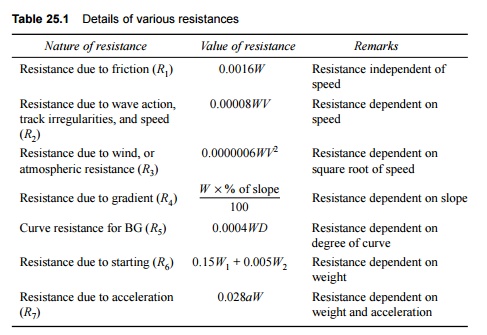Chapter: Civil : Railway Airport Harbour Engineering : Railway Engineering : Train Resistance and Tractive Power
Train Resistance Due to Starting and Accelerating
Various forces offer resistance
to the movement of a train on the track. These resistances may be a result of
the movement of the various parts of the locomotives as well as the friction
between them, the irregularities in the track profile, or the atmospheric
resistance to a train moving at great speed. The tractive power of a locomotive
should be adequate enough to overcome these resistances and haul the train at a
specified speed.
Resistance Due to Starting and
Accelerating
Trains face these resistances at
stations when they start, accelerate, and decelerate. The values of these
resistances are as follows:
Resistance on starting,
R6 = 0.15W1 + 0.005W2 (25.10)
Resistance due to
acceleration, R7 = 0.028aW (25.11)
where W1 is the weight of the locomotive in
tonnes, W2 is the weight of the vehicles in tonnes, W
is the total weight of the locomotive and vehicle in tonnes, i.e. W1
+ W2, and a is the acceleration, which can be
calculated by finding the increase in velocity per unit time, i.e., (V2 - V1)/t, where V2 is the final velocity,
V1 is the initial velocity, and t is the time taken.
Table 25.1 summarizes the various resistances faced by a
train.
Table 25.1 Details of
various resistances

Related Topics